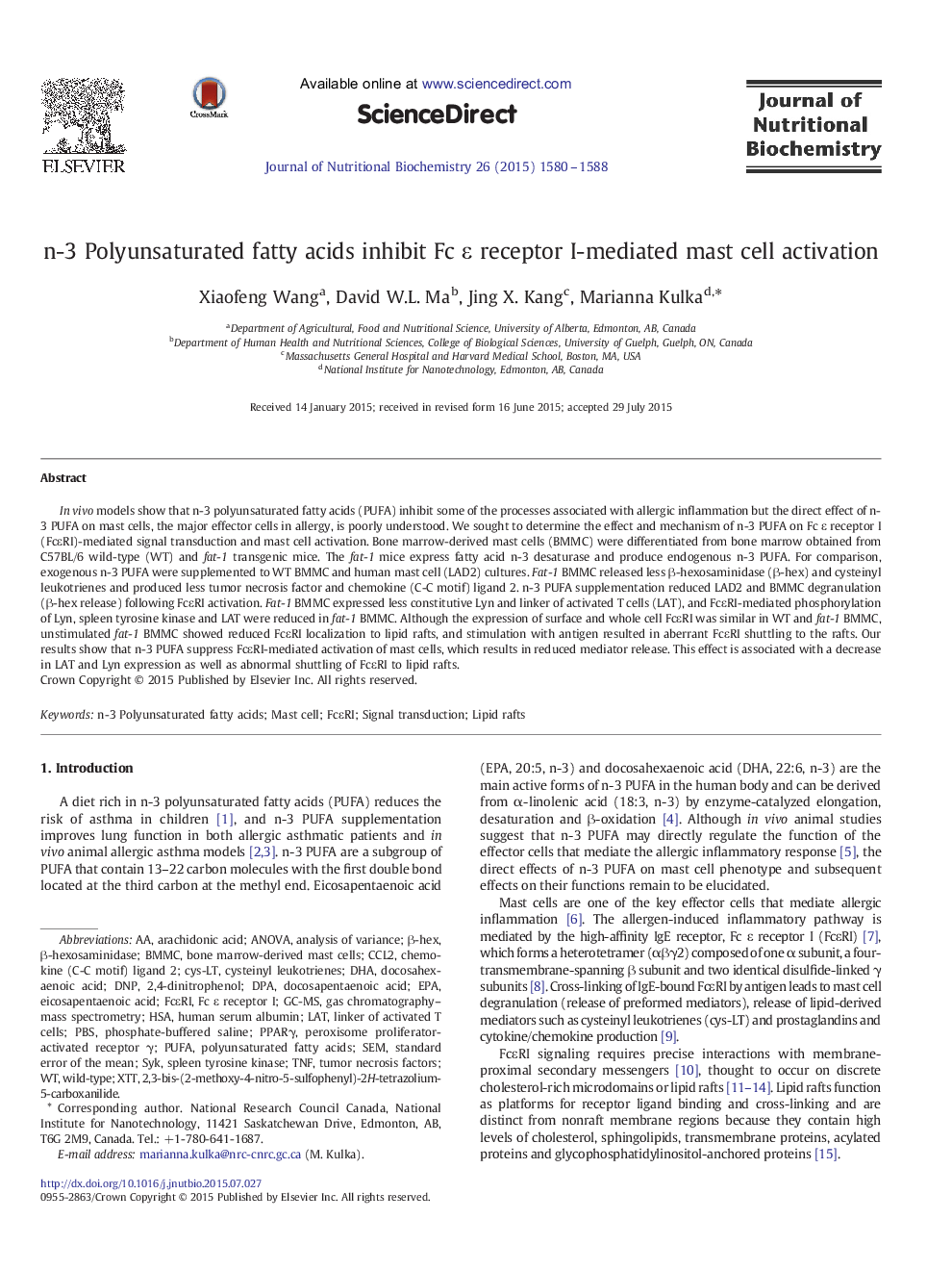| Article ID | Journal | Published Year | Pages | File Type |
|---|---|---|---|---|
| 8336785 | The Journal of Nutritional Biochemistry | 2015 | 9 Pages |
Abstract
In vivo models show that n-3 polyunsaturated fatty acids (PUFA) inhibit some of the processes associated with allergic inflammation but the direct effect of n-3 PUFA on mast cells, the major effector cells in allergy, is poorly understood. We sought to determine the effect and mechanism of n-3 PUFA on Fc ε receptor I (FcεRI)-mediated signal transduction and mast cell activation. Bone marrow-derived mast cells (BMMC) were differentiated from bone marrow obtained from C57BL/6 wild-type (WT) and fat-1 transgenic mice. The fat-1 mice express fatty acid n-3 desaturase and produce endogenous n-3 PUFA. For comparison, exogenous n-3 PUFA were supplemented to WT BMMC and human mast cell (LAD2) cultures. Fat-1 BMMC released less β-hexosaminidase (β-hex) and cysteinyl leukotrienes and produced less tumor necrosis factor and chemokine (C-C motif) ligand 2. n-3 PUFA supplementation reduced LAD2 and BMMC degranulation (β-hex release) following FcεRI activation. Fat-1 BMMC expressed less constitutive Lyn and linker of activated T cells (LAT), and FcεRI-mediated phosphorylation of Lyn, spleen tyrosine kinase and LAT were reduced in fat-1 BMMC. Although the expression of surface and whole cell FcεRI was similar in WT and fat-1 BMMC, unstimulated fat-1 BMMC showed reduced FcεRI localization to lipid rafts, and stimulation with antigen resulted in aberrant FcεRI shuttling to the rafts. Our results show that n-3 PUFA suppress FcεRI-mediated activation of mast cells, which results in reduced mediator release. This effect is associated with a decrease in LAT and Lyn expression as well as abnormal shuttling of FcεRI to lipid rafts.
Keywords
XTTCysteinyl leukotrienesPPARγHSADNPFcεRIBMMCβ-hexCCL2PBSDPA2,3-bis-(2-methoxy-4-nitro-5-sulfophenyl)-2H-tetrazolium-5-carboxanilideEPATNFcys-LTGC-MS2,4-Dinitrophenoln-3 Polyunsaturated fatty acidsβ-hexosaminidasehuman serum albuminArachidonic acidEicosapentaenoic aciddocosapentaenoic aciddocosahexaenoic acidPolyunsaturated fatty acidsPUFASykanalysis of varianceANOVAstandard error of the meanDHALATBone marrow-derived mast cellsspleen tyrosine kinasegas chromatography–mass spectrometryTumor necrosis factorsMast cellPhosphate-buffered salineSEMwild-typeSignal transductionchemokine (C-C motif) ligand 2Lipid raftsperoxisome proliferator-activated receptor γ
Related Topics
Life Sciences
Biochemistry, Genetics and Molecular Biology
Biochemistry
Authors
Xiaofeng Wang, David W.L. Ma, Jing X. Kang, Marianna Kulka,
